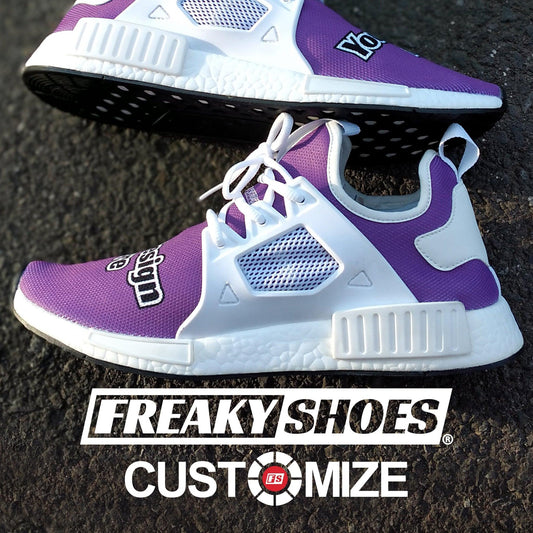We had to find out—are Chacos comfortable? With their thick soles and unique straps, they look supportive, but we didn’t know whether they actually feel good for all-day wear.
After months of testing, we’ve got an answer for you:
Yes, Chacos are comfortable but not right away. They need a break-in period, and if you don’t adjust them properly, they can rub and cause blisters.
So, should you get a pair?
Stick with us as we explain:
-
What makes Chacos comfortable
-
What issues you might face
-
User reviews
-
How to make Chacos more comfortable?
Let’s begin.
Key Takeaways
-
Are Chacos comfortable? Yes, but they take time to break in.
-
Great arch support makes them ideal for long walks and hikes.
-
Adjustable straps help you get a custom fit.
-
They are slightly heavy compared to other sandals.
-
Not perfect for wide feet, but they do offer a wide-fit version.
-
Water-friendly and great for kayaking, hiking, and beach trips.
-
Blisters are common at first, but softening the straps helps.
-
Breaking them in slowly makes a huge difference in comfort.
Are Chacos Comfortable? (Everything to Know)

Yes, Chacos are incredibly comfortable, but it depends on a few factors. When we first tried them, they felt a bit stiff. But after breaking them in, they became some of the most supportive and versatile sandals we’ve ever worn.
However, they do take some time to mold to your feet. If you're looking for a sandal that’s durable, water-friendly, and provides all-day comfort, Chacos are a solid choice.
Here’s what make Chacos comfortable:
Great Arch Support – Perfect for Long Walks and Hikes
We were shocked by how well Chacos support the feet. The thick, contoured footbed gives amazing arch support. It feels like our feet are resting in a solid, stable position.
When we took Chacos on a five-mile hike, we expected some foot pain. But surprisingly, our feet felt fine, even after walking on rocks and uneven ground. There was no soreness at the end of the day.
If you deal with foot pain, plantar fasciitis, or just want something better than flimsy sandals, Chacos are a game-changer.
One thing to know—Chacos do feel different at first. The arch support is strong, and if you're used to completely flat sandals, it might take time to adjust.
But trust us, once your feet get used to them, you won’t want to go back.
Customizable Fit – Straps Adjust to Your Foot Shape
Most sandals come in one shape. Your feet either fit them or they don’t. But Chacos? They’re different. The straps are fully adjustable, meaning you can customize the fit to match your exact foot shape.
Durable & Versatile – Handles Any Terrain, Wet or Dry
We’ve worn plenty of sandals that fell apart after a few months. Chacos are NOT those sandals. These things are built to last. We’ve worn them on rocky trails, at the beach, through rivers, and even on city streets. No matter where we go, they hold up.
The soles are thick and grippy, so we never worry about slipping on wet rocks or muddy trails. Unlike foam sandals that wear down fast, Chacos stay strong even after years of use. We’ve even seen people hiking in decade-old Chacos that still look solid.
Break-in Period – Feels Stiff at First but Molds to Your Feet
We won’t sugarcoat it—Chacos take some time to break in. When we first put them on, the footbed felt hard, and the straps rubbed a little. Some of us even got blisters in the first few days. But here’s the thing: once they broke in, they felt amazing.
It took about a week of regular wear before the sandals started molding to our feet. The straps softened up, and the footbed started feeling like it was made for us. Now, we can wear them all day without any discomfort.
If you’re new to Chacos, here’s what we recommend:
-
Wear them for short periods at first.
-
Adjust the straps to avoid rubbing.
-
Give them a week or two to fully break in.
Once they do, they’ll become some of the most comfortable shoes you own.
Water-Friendly – Perfect for the Beach, Rivers, and Rain
Most sandals fall apart when they get wet. Chacos don’t. These sandals are made for water. We’ve worn them while kayaking, walking through rivers, and even in the rain. They dry quickly, and the straps don’t absorb water, so they never get soggy.
One of the best things is the traction. We’ve walked across wet rocks and slick boat decks without slipping. The grippy sole keeps us steady even in tricky conditions.
If you spend time near water—whether it’s hiking near streams, hanging at the beach, or just dealing with summer rain—Chacos are a must. They handle water better than almost any other sandal we’ve tried.
Potential Problems With Chacos Comfort
Chacos are comfortable, but they’re not perfect. We’ve worn them enough to know that they have some downsides. The biggest issue with them is their straps. If they’re not adjusted right, they can rub and cause blisters, especially when new.
They’re also heavier than other sandals, which some people don’t like. And while the adjustable straps help, they don’t always work well for wide feet.
Despite these issues, many of us still love Chacos. But they’re not for everyone. If you’re thinking about buying a pair, here’s what you need to know.
Straps Can Cause Blisters – Especially When New or If Not Adjusted Properly
Let’s be real—Chaco straps can be tricky. When we first wore them, some of us got blisters. The straps rubbed against our feet in ways we didn’t expect. The problem? New Chacos have stiff straps, and if they’re not adjusted right, they dig into the skin.
The first time we hiked in them, we made a mistake. We tightened the straps too much, thinking it would help keep our feet in place. Big mistake. Within an hour, we had red marks and sore spots.
Here’s how to avoid the pain:
-
Adjust the straps carefully. Take time to get the perfect fit before going on a long walk.
-
Wear them in short bursts at first. Don’t go on a five-mile hike right away. Wear them around the house first.
-
Use socks. It might look silly, but wearing socks for the first few days can help.
-
Apply anti-chafing balm. If you know you’re prone to blisters, use something like Body Glide on potential trouble spots.
Slightly Heavy – Compared to Other Sandals
Chacos are not lightweight sandals. If you’re used to flip-flops or Tevas, you might notice the difference immediately. The thick rubber sole and durable straps add extra weight. It’s not unbearable, but it’s noticeable.
We realized this the first time we packed them for a trip. When we picked up our bag, we could feel the extra weight. Compared to foam sandals, Chacos are definitely bulkier.
Not Ideal for Wide Feet – Some People with Wide Feet Find Them Tight
Chacos are adjustable, but that doesn’t mean they fit everyone perfectly. Some of us with wide feet struggled with them. Even when we loosened the straps, the base of the sandal still felt a bit narrow.
One friend, Sarah, has wide feet and tried Chacos for a hiking trip. She said her pinky toes felt squeezed, even after adjusting the straps. Another friend, Jake, has wide feet too, but he had no problems. It really depends on the shape of your feet.
User Reviews on Chacos Comfort
We checked real customer reviews and talked to people who have worn Chacos for years. Some love them, some have complaints, and some have a love-hate relationship with them. Here’s what actual people had to say:
-
Emma: "At first, I hated them. The straps gave me blisters, and I almost returned them. But after a week, they became the most comfortable sandals I’ve ever owned."
-
Mike: "Best arch support ever. I have plantar fasciitis, and these sandals are a lifesaver."
-
Jess: "I wanted to love them, but they felt too heavy for casual wear. I only use them for hiking now."
-
Chris: "Took me a while to get the straps right, but once I did, I understood the hype."
-
Hannah: "I wore them in the rain, through rivers, and on a five-day hike. No issues. Love them!"
Who Will Find Chacos Most Comfortable?

If you need strong arch support, love hiking, or spend a lot of time near water, Chacos might be your perfect match. Unlike flimsy flip-flops, these sandals give your feet stability.
Here’s a list of people who will love Chacos the most:
Hikers & Outdoor Enthusiasts
If you love hiking, you know how hard it is to find the perfect footwear. Boots can be too heavy, and regular sandals don’t offer enough support. That’s why so many hikers swear by Chacos. They provide the comfort of a sandal with the stability of a hiking shoe.
Another big plus? They dry fast. If you’re crossing streams or hiking in wet conditions, you don’t want soggy shoes slowing you down. Chacos handle water like a champ, so you can keep moving without worrying about discomfort.
People with High Arches
We’ve talked to people with plantar fasciitis and arch pain who say Chacos helped them walk pain-free. The contoured footbed provides structure, so your feet don’t collapse inward. This reduces strain on your ankles, knees, and even your back.
However, if you’re used to flat shoes, Chacos might feel strange at first. Some people need time to adjust to the high arch support. But once your feet get used to it, you’ll likely find them much more comfortable than regular sandals.
Water Sports Lovers
If you spend time near water, Chacos are for you. Unlike leather or foam sandals that soak up water and stay wet for hours, Chacos are designed to handle water. The quick-drying straps and non-slip soles make them perfect for kayaking, rafting, and beach adventures.
Another bonus is that Chacos don’t smell. Wet shoes and sandals can get stinky fast, but Chacos dry quickly and don’t hold onto odors.
Those Who Prefer a Structured, Supportive Sandal
Some people love the feel of soft, squishy sandals. But if you need real support, Chacos are a much better option. The thick, contoured sole helps keep your feet stable, reducing fatigue and pain after long hours of walking.
Who Might Find Chacos Uncomfortable?
Here’s the thing: Chacos aren’t for everyone. Here’s who might not find them comfortable:
People Who Prefer Soft, Cushioned Shoes
If you love the feel of memory foam or extra-soft sneakers, Chacos might feel too firm for you. The footbed is designed for support, not squishiness. Some people describe it as "hard" when they first put them on.
Those with Extra Wide Feet
Even though Chacos have adjustable straps, they’re not always the best choice for people with extra-wide feet. Some of us have tried loosening the straps as much as possible, but the base of the sandal still felt too narrow.
If you’re unsure, it’s best to try them on in-store before buying. Some people with wide feet love them, but others find them too snug.
Anyone Sensitive to Break-in Time
Chacos don’t feel perfect right out of the box. The straps can be stiff, and the footbed takes time to mold to your feet. If you’re someone who wants instant comfort, this might be frustrating.
If you don’t want to deal with the break-in period, Chacos might not be the best choice.
How to Make Chacos More Comfortable? (Tips & Tricks)
We’ve tested different ways to make Chacos more comfortable, and these tricks really help.
|
Tip |
What to Do |
Why It Helps |
|
Adjust Straps |
Loosen, then snugly tighten straps; heel should stay secure. |
Prevents blisters and foot pain. |
|
Break Them In |
Wear briefly with socks; use anti-chafe balm on hotspots. |
Reduces rubbing and discomfort. |
|
Try ChacoGrip Footbeds |
Choose Z/Cloud for softer, cushioned support. |
More comfort, less break-in time. |
|
Soften Straps |
Soak in warm water, walk damp; apply coconut oil or fabric softener. |
Softens straps, prevents blisters. |
|
Choose Right Model |
Z/1: no toe loop, Z/2: toe loop, Z/Cloud: soft, Odyssey: closed-toe. |
Better fit and comfort for your needs. |
|
Keep Feet Dry |
Dry feet, use powder or moisture-wicking socks. |
Prevents slipping and irritation. |
Conclusion: Are Chacos Worth It?
Chacos aren’t for everyone, but if you need a sandal that lasts, supports your feet, and works on all terrains, they’re a great choice. Just remember:
-
Give them time. They take a while to break in, but it’s worth it.
-
Adjust the straps. A perfect fit makes all the difference.
-
Expect some blisters. But don’t worry—they go away as the straps soften.
-
They’re not the lightest. If you want an ultra-light sandal, Chacos may feel bulky.
-
They last for years. Unlike cheap flip-flops, Chacos won’t fall apart after one summer.
If you’re willing to break them in, Chacos can become the most comfortable sandals you own. They’re tough, supportive, and built for adventure.


















